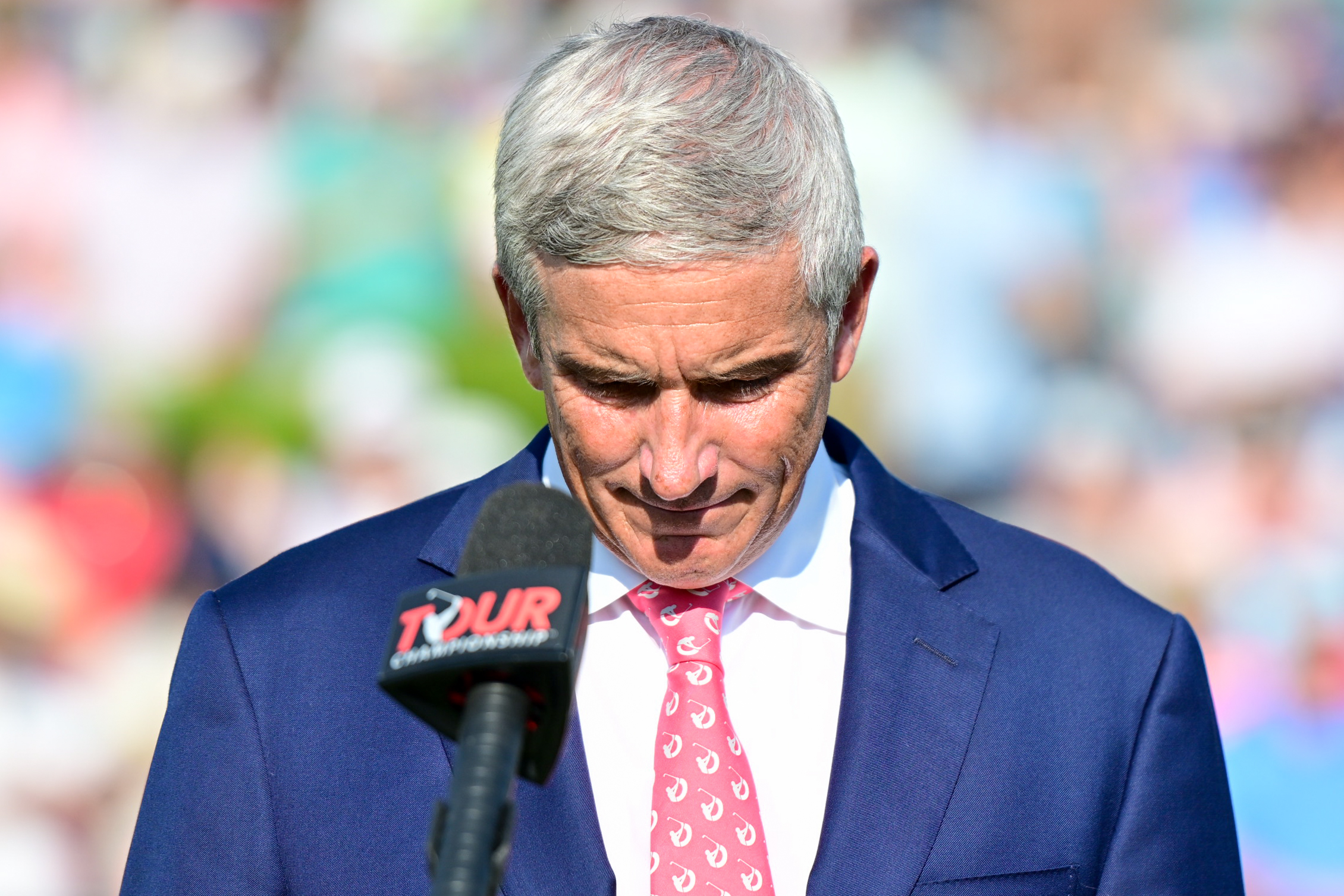When it comes to making consequential changes, the PGA Tour’s Global Home has much in common with the Vatican, two cloistered realms accustomed to moving at the drowsy pace of papal encyclicals rather than with the immediacy expected in the modern world. It’s been 39 days since the Tour’s ultimate authority, Jay Monahan, issued his bulletin — let’s call it Electi pretium (“Chosen Price”) — outlining a vision to secure the loyalty of the world’s top golfers, details of which he said would be revealed in 45 to 60 days. That’s a dizzying pace for the prelates of the Ponte Vedra curia tasked with executing the particulars, as it would be for any major sports league to fundamentally overhaul how it does business.
The easy part involves money: the Player Impact Program doubling to $100 million, the $500,000 guarantee for all rookies, the modest stipend so cut-missers can defray expenses. More problematic is the radical reshaping of the product that Monahan promised at the behest of a group of players led by Rory McIlroy and Tiger Woods.
Electi pretium calls for a tour within the Tour, 12 events “elevated” with $20 million purses and elite fields. Add the majors and the Players Championship, and the game’s best would compete against each other 17 times every season, considerably more often than they do now. But elevating tournaments is far from straightforward.
Some of the anointed have been announced — three FedEx Cup playoff events, the existing invitationals (Memorial, Arnold Palmer and Genesis), the WGC Match Play, and the Sentry Tournament of Champions. The remaining four are to be determined, but will likely rotate among sponsors willing to pay the premium required for elevation every few years but not annually. When elevated events are decided, where do they fall on the schedule? Most events earmarked for elite status are fixed on the calendar. The puzzle of pacing won’t be solved without some tournaments being nudged to new dates, which raises fresh considerations in every instance.
An unavoidable by-product of designating elevated tournaments is creating a caste system among PGA Tour events, one tier where elite players are guaranteed to show up, another where their presence would be an unexpected bonus. For sponsors historically focused on impacting their host communities — Sanderson Farms this week, for example — implied relegation might not diminish the tournament’s corporate value, but that view won’t prevail in every C-suite.
Elevating tournaments only formalizes the existence of a second division, since it’s always been the case that some events attract better fields. The Tour will insist that increasing the value of one tournament does not automatically reduce the value of another, but mitigating sponsor jitters is why top players must also commit to playing three non-elevated stops every year. Some events will see elite talent simply because the dates suit to fulfill their obligations.
The scope of those obligations is already proving contentious. Jon Rahm questioned whether committing to 20 weeks — the majors and Players, the 12 elevated and the three discretionary — would prevent him from supporting events in Europe. Those 20 appearances would be expected between January and Labor Day, with PIP eligibility potentially tied to playing a full slate. Monahan’s team may need to carve out a compromise that requires stars play a minimum number of those Tour-controlled events rather than all of them.
The problems being faced in Ponte Vedra don’t end with the season. What happens after Labor Day? Top players aren’t going to sit home for four months — guys who said they wanted to do that more often already left for LIV. This is where the PGA Tour’s alliance with the DP World Tour comes in. After the FedEx Cup playoffs, after the wealthy have time to overcome their weariness, we’ll probably see many top guys compete in the final sprint of the European circuit’s Race to Dubai. Integrating significant European events into the broader PGA Tour landscape — perhaps even as elevated stops — is part of the ongoing discussions, adding a layer of global complexity to what is already a Russian doll puzzle.
Starting in ’23, the domestic Fall schedule in the U.S. is unlikely to attract much star power at all compared to the meat of the year, but then it seldom has. The consolation (relevant only to hardcore fans) is that more will be at stake as players scramble for status and to avoid the trauma of a resurrected Q-School, the mention of which still causes many a veteran to twitch. There will be drama, albeit generated largely by cameo actors. Winners beget losers in the crude arithmetic of the coming changes.
This entire process has been driven by unhappy players and what they need to be slightly less unhappy. Some chose the balm of Saudi cash, others opted to stay and fight for improvements to the PGA Tour. But most simply sat back and waited to see what others will serve them, ready to turn up their noses and threaten anew to go eat next door at Greg’s Grill, despite the owner’s reputation for not handling criticism well. Monahan must know that the day nears when he will have to do what every exasperated restaurant manager does: tell disgruntled diners that the menu is the best he can offer, and if they don’t like it, well then, there’s no barbed wire around the exit.

